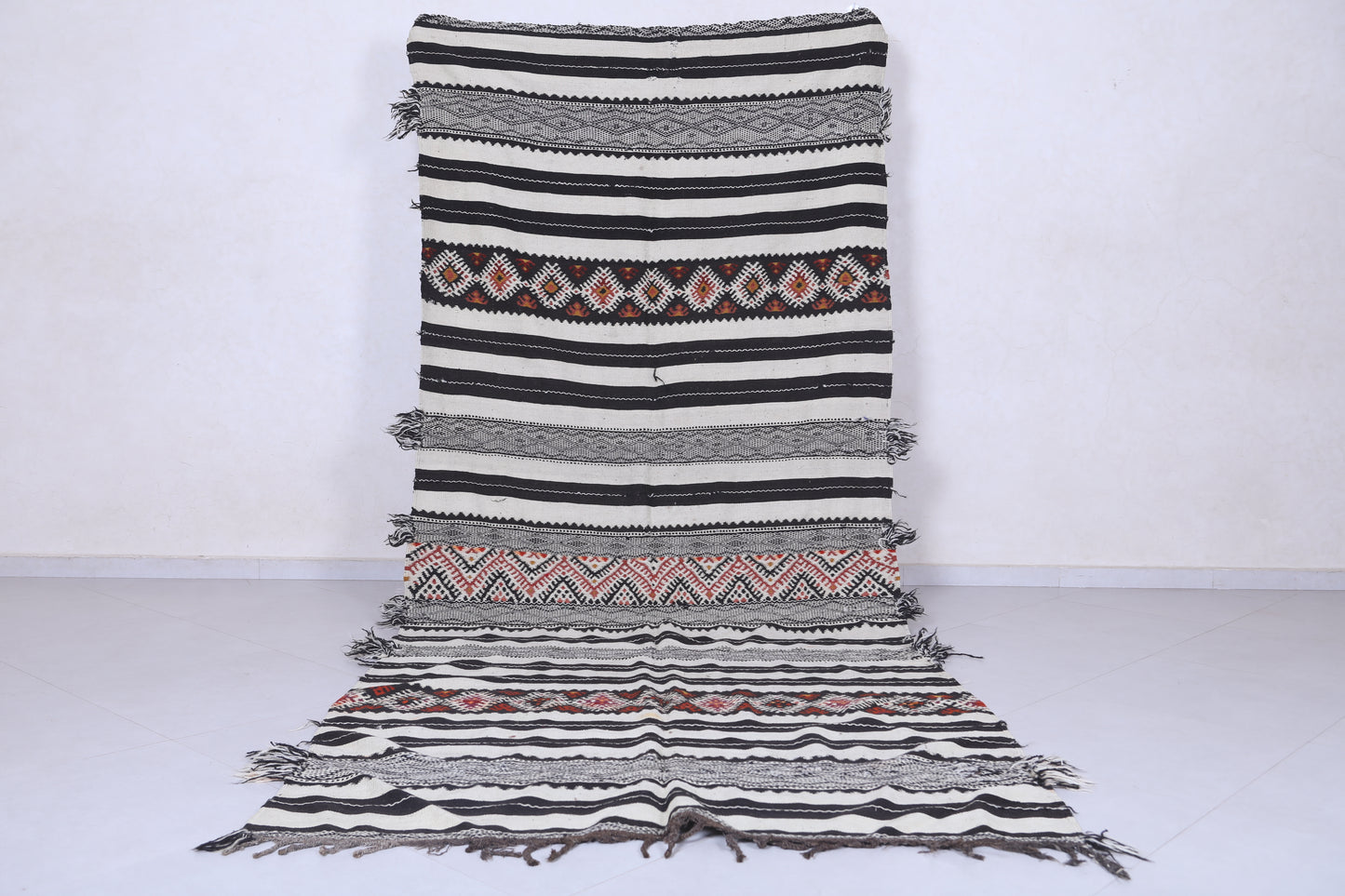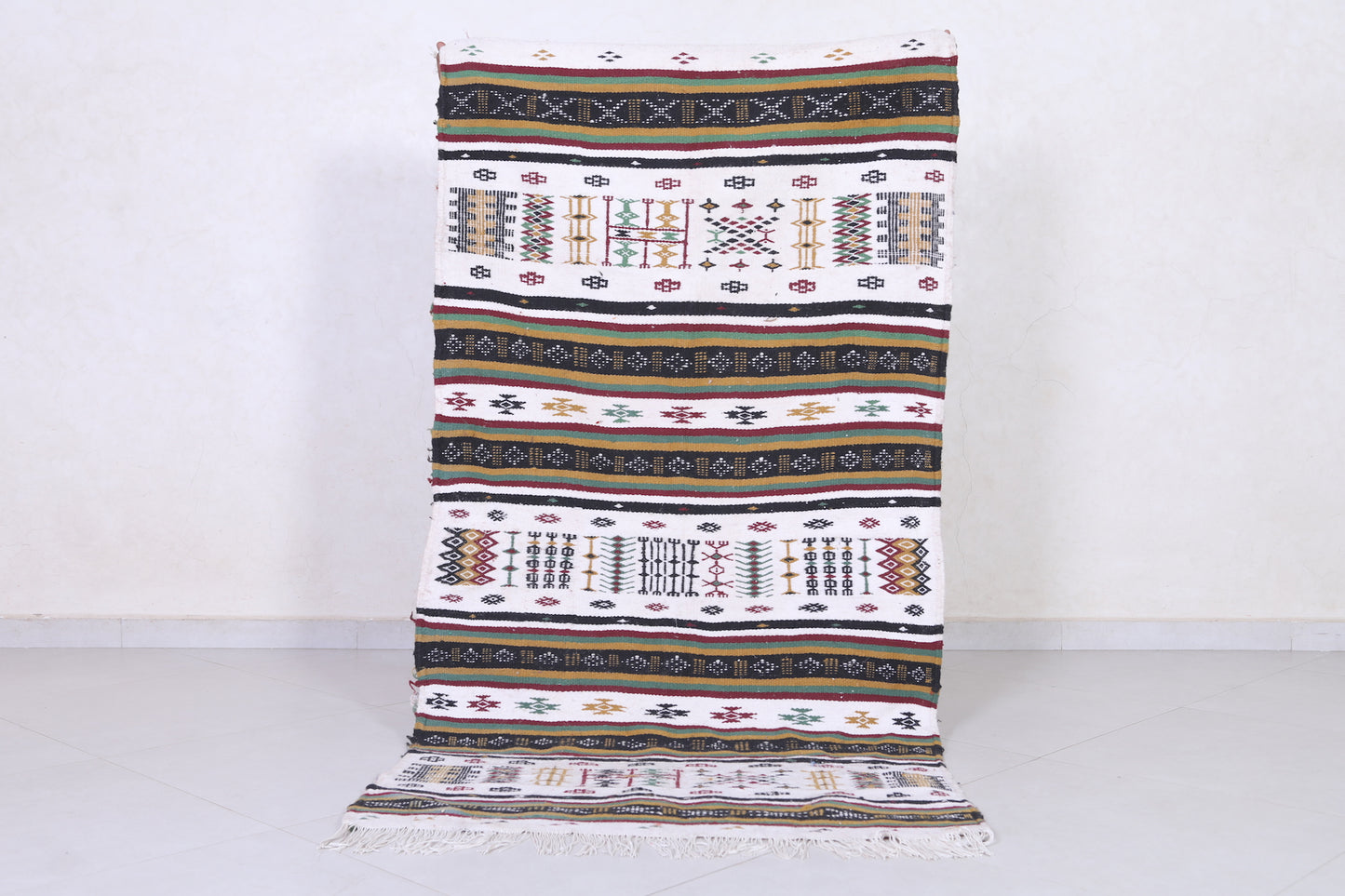You arrive inside the small Moroccan village, following the sounds of rhythmic thumping and active laughter. As you next door, you see them - women gathered under the coloration of olive timber, fingers flying as they paintings colorful threads. This is the advent of a kilim, a handwoven rug, in action. For days, weeks, even months, these ladies were hard at paintings reworking piles of wool into a complex work of artwork.
From the combing and spinning of the wool to the dyeing with colourful natural pigments to the actual weaving, the process is entirely done by means of hand. Patterns emerge, complicated and enchanting, because the weft and distort threads are interlaced. Stories and logos are woven into each rug, with meanings which have been surpassed down for generations.
This is not any informal craft - it's miles an artistic lifestyle that has been honed over centuries right into a wondrous demonstration of skill and beauty. Watching the wool transform under the deft arms of the weavers, you advantage an appreciation for the care and dedication at the back of each knot and braid. A unmarried kilim can also take months to complete, but will remaining for generations, a reminder of a long-lasting cultural background of the Maghreb.

The History and Cultural Significance of Moroccan Kilims
Moroccan kilims have been woven by hand for centuries, passed down through generations of skilled artisans. These colorful wool rugs are more than just home decor - they're an integral part of Moroccan cultural heritage.
For hundreds of years, kilims were woven by women in rural villages across Morocco. The wool was hand-spun and the natural dyes were made from local plants and minerals. Designs were passed down orally through generations, with each tribe and region developing their own unique patterns and motifs.
Weaving a kilim requires an immense amount of time, patience, and skill. First, the wool is cleaned, combed, and hand-spun into skeins of yarn. Then, the weaver sets up the loom and carefully selects colors to use based on the desired pattern.
It can take weeks or even months of meticulous work to complete a single rug. The end result is a dazzling display of color, pattern, and cultural tradition. No two kilims are exactly alike.
Today, most kilims are still made using traditional techniques, keeping this ancient craft alive. When you buy an authentic Moroccan kilim, you're purchasing an heirloom that has been woven with timeless artistry and care. These rugs bring the spirit of Morocco into any home, reminding us of the beauty that can emerge from simplicity.
Kilims are woven wonders, cultural treasures that deserve our appreciation and respect. By supporting traditional Moroccan crafts, we help sustain this rich artistic heritage for generations to come.
How Moroccan Kilims Are Made: A Labor of Love
To make a traditional Moroccan kilim rug is truly a labor of love. First, high-quality wool is hand-spun into yarn, then dyed vibrant colors using natural dyes like indigo, saffron, and henna.
Next, a master weaver uses a loom to hand-knot each kilim, meticulously tying thousands of knots to create intricate patterns. The most complex designs can take months of painstaking work to complete.
The Pattern's the Thing
The complex geometric patterns featured in Moroccan kilims are deeply symbolic, with diamond shapes representing fertility and triangular motifs symbolizing mountains. Curvilinear designs are also popular, mimicking the flow of water.
Weavers often create patterns from memory, following designs passed down through generations. However, some weavers are innovative, creating their own unique patterns to produce totally one-of-a-kind pieces. The diverse patterns and colors of Moroccan kilims reflect the rich cultural heritage of Morocco.
A Community Effort
Kilim weaving provides livelihoods for many Moroccan families. Wool is sourced from local sheepherders, and natural dyes are made from plants and minerals found throughout Morocco. Families work together washing, carding, and spinning wool, as well as helping to set up looms.
Weaving a kilim rug is a community effort that brings families and villages together. When a rug is complete, the weaver's family helps celebrate this monumental achievement. The making of these handcrafted works of art creates community and cultural connections that have endured for centuries in Morocco.
Owning an authentic Moroccan kilim rug means having a wearable work of art that supports traditional crafts and livelihoods. Each rug tells a story of the human hands that so skillfully brought it to life.
Types of Wool Used in Moroccan Kilims
The wool used in traditional Moroccan kilims comes from two sources: sheep and goats. Each type of wool has unique properties that affect the look and feel of the finished rug.
Sheep’s wool, especially merino wool, is very soft and fine. Rugs made of sheep’s wool tend to be lightweight, pliable and luxurious. The wool is naturally creamy in color and takes dyes well, producing bright, vibrant colors. Sheep’s wool is more expensive, so rugs made entirely of sheep’s wool tend to be higher end.
Goat’s wool, on the other hand, is coarser and thicker. Rugs woven with goat’s wool tend to be heavier, stiffer and more durable. The wool has a natural brownish tint and produces more muted, earthy tones when dyed. Goat’s wool is very affordable, so rugs made with goat’s wool, or a blend of goat’s and sheep’s wool, tend to be lower cost.
Many Moroccan kilims use a blend of sheep’s and goat’s wool to balance cost, color, and durability. The specific blend of wools, as well as the quality of the wool, are factors that ultimately determine the characteristics and value of each rug.
In some regions, camel hair is also used in small quantities, mixed with sheep’s or goat’s wool. Camel hair adds texture, sheen and subtle natural coloring. The interplay of different wool types, in different proportions, gives Moroccan kilims their distinctive hand and appeal. The skillful weaving of these wools, with their unique qualities, is what produces the supple, colorful woven wonders known as Moroccan kilims.
Moroccan Kilim Rugs: A Harmonious Blend of Design and Functionality
Moroccan kilim rugs are functional works of art, handcrafted with care and precision. For generations, Moroccan women have handwoven these colorful wool rugs, passing down time-honored techniques from mother to daughter.
Each kilim begins with hand-spun wool, dyed in vibrant colors using natural dyes like indigo, saffron, and pomegranate. The wool is then handwoven on a vertical loom, threading colored wefts over and under the warps to create geometric patterns and symbolic designs. This process requires patience, skill, and an eye for color and pattern.
The end result is a flatwoven rug that is durable, reversible, and doubles as a blanket, tablecloth, or wall hanging. Kilims come in a variety of sizes to suit any space. Larger rugs, often measuring 6 by 9 feet or more, are ideal for living rooms and dens. Medium rugs work well in bedrooms and studies, while small kilims can accent hallways or be used as pillows.

Kilim styles often have cultural importance, employing symbolic motifs that represent fertility, safety, or tribal identification. A famous layout is the “wedding blanket” sample, offering diamond shapes in purple, a shade that symbolizes love and new beginnings in Moroccan culture. Other common styles comprise the “hand of Fatima,” an ancient image of accurate success and protection towards evil.
Owning an true Moroccan kilim approach owning a hand made treasure infused with the history, tradition, and creative heritage of Morocco. Each rug has a story to tell of the girls who wove their talents, dreams, and cultural traditions into a long-lasting work of artwork. A kilim rug will bring warmth, shade, and which means to any space.
Versatile Beauty: Decorating with Moroccan Handwoven Kilim Rugs
Moroccan kilim rugs are perfect for decorating any area in your own home with their vibrant hues and geometric styles. Their versatility and sturdiness lead them to perfect for high-visitors regions, while their cultural heritage gives them a one-of-a-kind bohemian chic style.
Floor Covering
Kilims work well as region rugs in living rooms, bedrooms, and entryways. Their low pile way they can slip underneath doorways and be used in any room. For excessive-site visitors spots like hallways, staircases or family rooms, kilims keep up higher than maximum carpets. Their tight weave prevents dirt and particles from embedding deep in the fibers. Most spills blot up without difficulty with a humid material seeing that kilims are not chemically handled.
Wall Hanging
One of the maximum popular ways to beautify with kilims is as a wall placing. Their colourful styles and textures make an artistic focal factor for any room. Kilims may be framed, mounted, or hung freely the use of nails or hooks. For large kilims, keep in mind installing a timber mounting board to save you sagging. Kilims additionally work properly grouped together for a gallery wall of woven art.
Furniture Covering
The long lasting, flexible nature of kilims makes them perfect for covering furnishings like couches, chairs, ottomans, and tables. They guard upholstery from spills and stains whilst adding a pop of sample. For couches and chairs, stable the kilim in area the use of upholstery tacks, double-sided tape or Velcro dots. For ottomans and tables, without a doubt vicinity the kilim on pinnacle, securing the rims beneath.
Kilims are woven wonders that enhance your house with comfort, colour and cultural fashion. Their versatile splendor and artisanal history create residing areas that feel relaxed, accrued and meant to be enjoyed. Display them with delight and bypass them down for generations.
Conclusion
So subsequent time you spot one of those beautiful woven rugs from Morocco, recognize the artistry and skill that went into creating it. An problematic dance between the weaver and the wool, every rug tells a tale of background and handcraft honed over generations. Though you can no longer completely draw close the cultural significance or symbolism woven into every pattern, you may recognize the consequences of a time-commemorated lifestyle of home made perfection. The extraordinary info, the brilliant shades, the soft pile inviting you to kick off your shoes and sink your toes in—all made feasible via the passion and endurance of the human spirit. A rug like that deserves a place of honor in your property, a daily reminder of the wonders human arms can create.
